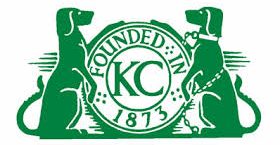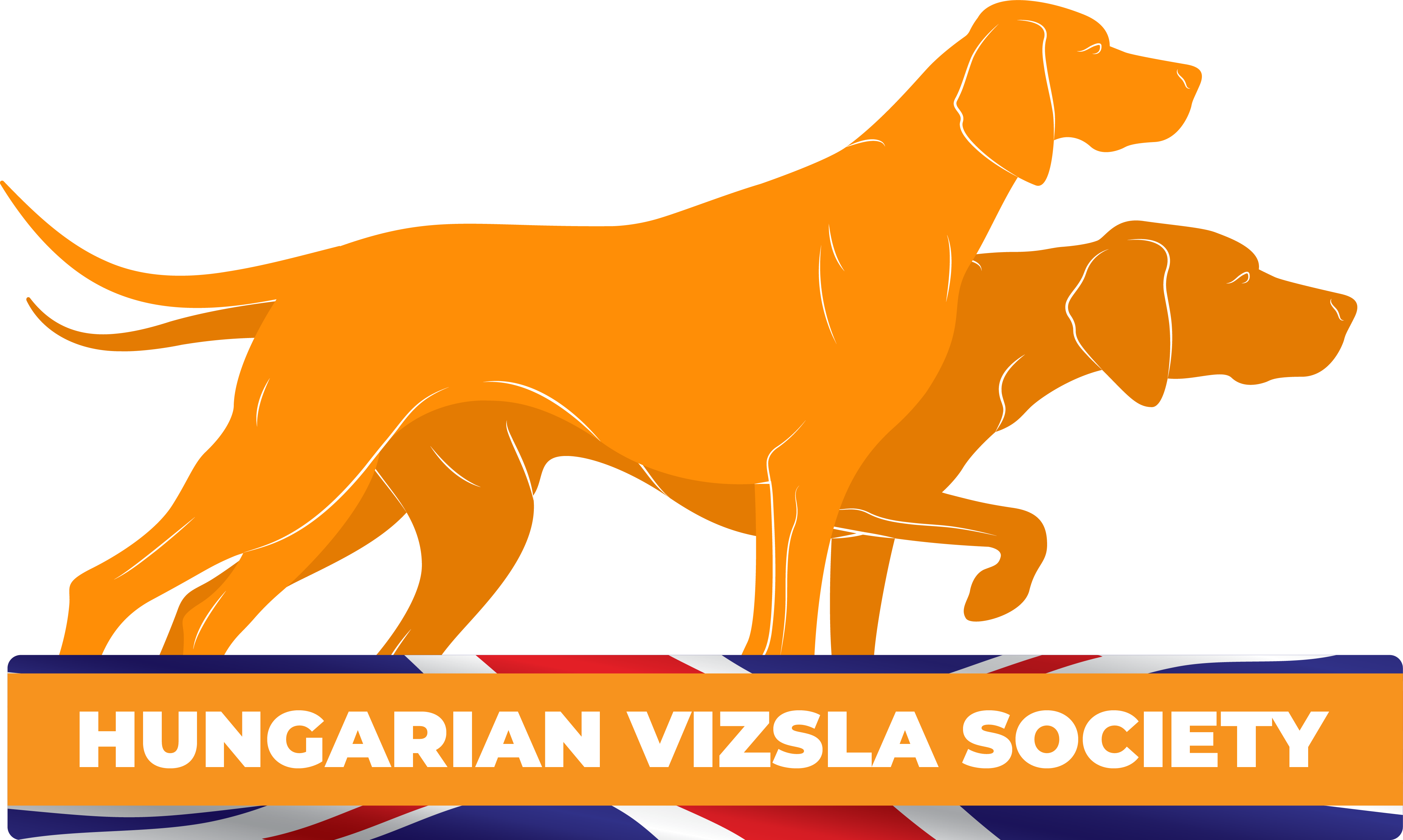CODE OF CONDUCT TO SAFEGUARD THE HUNGARIAN VIZSLA
VIZSLA SPECIFIC BREED CODE OF ETHICS

Code of Conduct for the Vizsla, agreed in partnership between the Vizsla Club and the Vizsla Society and approved by the KC.
It is important that puppy purchasers are aware of the responsibilities of breeders and the standards of compliance being strived for, in order to safeguard the Vizsla. ensuring their health, quality and welfare.
They also need to feel it is a safe business transaction with known expectations.
EXPLANATION
The Code of Conduct has two sections.
First part is Kennel Club General Code, paras 1 to 14. All Breed Organisations have to adopt this.
Second is the Specific Vizsla Code of Conduct which has:
1. The Value Statement
2. The Rule itself.
3. The Footnote / end note
KENNEL CLUB GENERAL CODE
Sets out a general code for members of all breed clubs, and prefaces the individual Vizsla Breed Code of Conduct

OUR VALUES STATEMENT
The intent of this Code of Conduct is to “safeguard the future of the Hungarian Vizsla,” and the principle is to interpret all content so as to favour the Vizsla. There is an assumption that there will always be personal or commercial gain but this must never be the only reason for breeding. The health, quality and welfare of the Vizsla must always be the focus of all Vizsla owners whether members of breed organisations or not.
The aim is to seek compliance by working in partnership to educate, persuade and influence for best practice. 1
However Breed organisations will take action when mandatory aspects 2 of the Code are breached in circumstances where safeguarding has not occurred and where the Vizsla may have been abused.
Breeders’ MUST aim to:
● Maintain or improve the quality 3 of the stock, retaining breed characteristics.
● Only use dogs and bitches which are of sound temperament. 4
● Only use dogs and bitches which are of sound construction. 5
● Only use dogs and bitches which are healthy and free of diseases. 6
● Only use dogs and bitches which are health screened 7 for compliance to this Code.
● Only use dogs and bitches within the “age” constraints of this Code.
● Only use dogs and bitches which are Kennel Club Registered as smooth Hungarian Vizsla and micro chipped.
● Only use dogs and bitches who meet the criteria of this Code 8 at the time of mating.
● Where artificial insemination 9 is deployed the Code will be applied as if the stud dog was still alive.
● Breeders will promote their breeding as Code of Conduct compliant. 10
15) Members will consider the welfare of their dogs and the benefit to the Breed above any personal gain or profit.
16) Members will only Breed from Vizslas that are of sound temperament, physically sound and free of known hereditary diseases, which show natural ability and conform to the Breed Standard as published by the Kennel Club.
HEALTH SCREENING BEFORE MATING
Health screening of your Vizsla as in Paras 17(1) to 17(3) before mating is mandatory, and is recommended for all Vizslas. (compulsory for Vizslas born from 1st January 2018, and strongly recommended for all Vizslas born before this date.)
DNA testing and health schemes are available to Vizsla owners, however for many conditions little is known of underlying causes and health screening tests are not yet available. Such conditions include: Addison’s disease, Cushing’s disease, some forms of Epilepsy, some heart conditions, Entropion and auto immune disorders such as idiopathic inflammatory polymyopathy. Breeders are encouraged to be vigilant as to whether to proceed with a repeated mating, where the first mating has produced affected offspring. They should be able to validate decisions on the basis of
how any ongoing risk has been mitigated.
17(1) Will hip score their Vizsla, obtaining and assessing the results. (Scores that are high compared to published breed median score or disproportionate in score from hip to hip should be discounted from breeding.)
17(2) Will ensure their Vizsla is tested for Glaucoma 11 and those with scores of 3 and above are discounted from breeding. 12 Also to undertake a goniodysgenesis test (predisposition for glaucoma) every 3 years. (i.e 12 months, 4 years and 7 years)
17(3) Will elbow score their Vizsla – any dog / bitch with a score higher than 0 should not normally be considered for breeding. 13
17(4) Owners and breeders are expected to report any occurrence of illness or disease which may have long term consequences for the breed to the Breed Health coordinator appointed by the KC.
17(5) Owners and breeders are encouraged to actively support any bona fide research programme specific to the Vizsla.
BREEDING
Health screening of your Vizsla as in Paras 17(1) to 17(3) before mating is mandatory, and is recommended for all Vizslas. (compulsory for Vizslas born from 1st January 2018, and strongly recommended for all Vizslas born before this date.)
18(1) Members or Breeders using their dog at stud:-
a) will not allow their dog to serve bitches of less than 2 years of age, 14 or bitches who will whelp after their 8th birthday. 15
b) Will not allow their dog to be used at stud until it is 18 months of age. 16
c) Will not allow their stud dog to be used more than three times in its first year of use. 17
d) Where artificial insemination is used, the Code will be applied as if the stud dog was alive.
The Breeder will have to show due diligence in the Stud Dogs compliance to this Code of Conduct. 18
18(2) Members will not allow their bitches:-
a. To be mated before their 2nd birthday or to whelp after their 8th birthday.
b. To whelp more than once in any 12 months.
c. To have more than 4 litters in her lifetime. 19
d. Will ensure that their chosen stud dog meets the Breed Standard, and it is proven before mating that it meets the requirements of this Code of Best Practice. 20
e. Where a bitch gives birth by Caesarean delivery – after the second caesarean it will be removed from further breeding programs.
f. Where the bitches pedigree is endorsed “R-Progeny not for registration” You must have the Breeders written consent to go ahead with the mating, and that the restriction will be lifted to allow registration of the puppies at the Kennel Club.
18(3) Will not allow their Vizsla to be intentionally bred with any other Breed. Only Dogs and bitches which are Kennel Club Registered as smooth Hungarian Vizsla and micro chipped are eligible.
19(1) Members will register all stock with the Kennel Club.
Kennel Club Registration documents will be available to the puppy purchaser at point of sale together with a three generation pedigree. 21
19(2) Puppies will not be removed from the maternal mother before 8 weeks of age.
20. Puppy purchasers are encouraged to present their puppy to their local veterinary surgeon within 3 working days of purchase. Should a veterinarian at such an examination give advice that the dog is not in good health, the purchaser should authorise their veterinarian to confirm the diagnosis with the breeder. The Breeder will act expeditiously to remedy the situation.
Within seven days it is expected that they will take the puppy back, and without prejudice give a full refund, including any deposit. 22 Thereafter redress will be in accordance with the terms and conditions within the Breeders Contract with the puppy purchaser.
21. Breeders are encouraged to take an interest, and remain connected with the puppy purchaser for the life of the Vizsla. Where puppy purchasers give consent, there should be no barrier for all purchasers of all stock from that litter to remain connected during the lifetime of their purchase.
Should there be a health issue, a welfare issue or a lifestyle crisis, they are expected to provide transparency of advice, direction and distance support. The aim must always be to safeguard the interests of the Vizsla that finds itself in need of assistance. Breeders contracts should detail the extent of help and assistance, and the terms of the offer. Preventing distress and suffering must always be the aim.
END NOTES / FOOTNOTES
1. The Breed Organisations will work with Rescue Charities, the Kennel Club, Assured Breeder Scheme operatives and other types of Commercial Breeders in order to maximise the impact of adherence to this Code of Conduct to safeguard the Hungarian Vizsla.
2.Where a mandatory part of the Code is breached and a Vizsla can appear to have been recklessly or intentionally abused or misused, the breach is likely to attract suspension or expulsion from Breed Organisation membership.
3. The aim of all breeding should be to improve the breed or at least provide a quality litter, from carefully selected and planned mating. Mis-matings or couplings where the true donor cannot be ascertained should not be registered.
4. Any dog or bitch which shows consistently, aggressive tendencies to humans or other dogs should not be used in breeding.
5.Faults in construction take only one generation to introduce to a breed, but many generations to remove!
6.Dog and particularly the bitch must be in good health and strong enough to endure the demands of a pregnancy, the whelping and rearing a litter.
7.Dogs or bitches may be identified as carriers of a gene, but can still be used in a breeding program to a clear screened mate. Prospective puppy owners need to be educated in the health screening programmes currently available. We as breed organisations need to be monitoring the health of the breed more effectively to be alert to new challenges.
8. In all respects, health screening and planned breeding programs.
9.The donor dog may be deceased, but the requirements of all aspects of the sire will be met as if the dog was still alive.
10.Breeders will promote their compliance to this Code of Conduct as a unique selling point in their transactions. Prospective puppy owners need to be aware of the existence of the Code of Conduct – how to we promote it?
11. The Hungarian Vizsla is on a Watch List for Eye problems – BVA/KC/ISDS Eye Scheme, Schedule B – Conditions under Investigation Goniodysgenesis/Primary Glaucoma
12. In compliance with current BVA Guideline and KC Advice. (Previously listed as scoring 2 or above would exclude from further Breeding.)
13. BVA Advice = It is strongly recommended that breeders wishing to reduce the risk of elbow dysplasia should
( normally*) – (inserted at KC recommendation) select their breeding stock (both dogs and bitches) only from animals with an overall grade of 0. Elbow Screening remains mandatory.
Dogs with elbow grades of 2 or 3 have marked osteoarthritis likely to be due to Elbow Dysplasia, with or without a visible primary lesion. There is a significant chance of Elbow Dysplasia being passed on to the offspring.
Dogs with elbow grades of 1 show mild or early osteoarthritis which is also likely to be due to Elbow Dysplasia. They should only be used for breeding with caution, taking into consideration the ED grades of as many relatives as possible, as well as the results of other health tests and characteristics
14. Welfare of immature and mature bitches. Bitches usually have first season at between 6 and 12 months, and a second season between 1 years and 18 months. Aim is to have 2 clear seasons before breeding. The Vizsla is a slow maturing breed – the bitch must be given time to fully develop before facing the stresses and strains of pregnancy.
15. Allowing at least 64 days before 8th birthday for gestation/pregnancy. Although the Vizsla is a slow maturing breed, and bitches remain fertile beyond 8 years.
Whilst many bitches are still fit and healthy at 8 years and would have no difficulty in rearing a litter of puppies, this provides a mechanism to reduce the number of bitches having 4 litters, as fitting those in between 2 and 8 years is a challenge when complying with all the other aspects of the code.
16. Bitch 2 years, sire = 18 months reason for variance = Bitch will have a 64 day pregnancy where she will need to be mature in mind and body to cope with the demands that pregnancy and rearing a litter will put on her, whereas the dog merely provides the semen.
17. Limiting any detrimental effect on overuse of bloodlines. If a dog is used for 3 covers the progeny will never be more than 1% of breed record supplement registrations. Any immediate health issues (some may be dormant until progeny is mature) can be recognised and decisions made. If covers were not regulated a 5% impact of breed record registrations, would be a significant health impact if there was an issue. It applies to a stud dog of any age, not just 18 months, and would include an import from first use in the breeding chain.
18. An artificial Insemination KC Form 2 must be submitted together with the litter application form at time of registration. It must be transparent that this is a mating by AI. Where the procedure is done under general anaesthesia the KC will require justification of the net benefit to the bitch in conceiving as a result of this invasive procedure.
19.The Kennel Club advice is 4 litters, we previously said 3 with 12 clear months between them. Influence of small litters or large litters, now an assumption of better nutrition, better healthcare and caesareans, better diagnostics. An ambiguity if we kept 3 litters as KC would still register the progeny of a 4th litter thus legitimising the breeding and make the Code of Conduct seem conflicting. Assured will always tend towards a 4th litter within guidelines.
20. Going through health screening after the bitch has been covered will not mitigate the breach. Essence is all screening before a decision on mating. The owner of the bitch must ensure that the chosen sire meets the criteria for health screening as an absolute minimum. Presumably the dog has been chosen with the aims (as listed in the Code of Practice) in mind.
21. Reduced to a three generation pedigree. Purchaser can always purchase a five generation pedigree from the Kennel Club
22. Full refund within 7 days, including deposit is the expectation, without re-homing fee. Beyond this point of purchase and return, any redress, will be according to the breeders previously published terms and conditions.
EXPLANATORY NOTICE
The footnotes are to assist in the explanation and interpretation of the rules of this Code of Conduct. They give guidance for compliance and best practice. They do not form part of the mandatory Rules of the Code.
The Hungarian Vizsla Society launched its first simple and aspirational Code of Conduct in 1992, and the current version listed above was approved at the Annual General Meeting of the Hungarian Vizsla Society in February 2019
